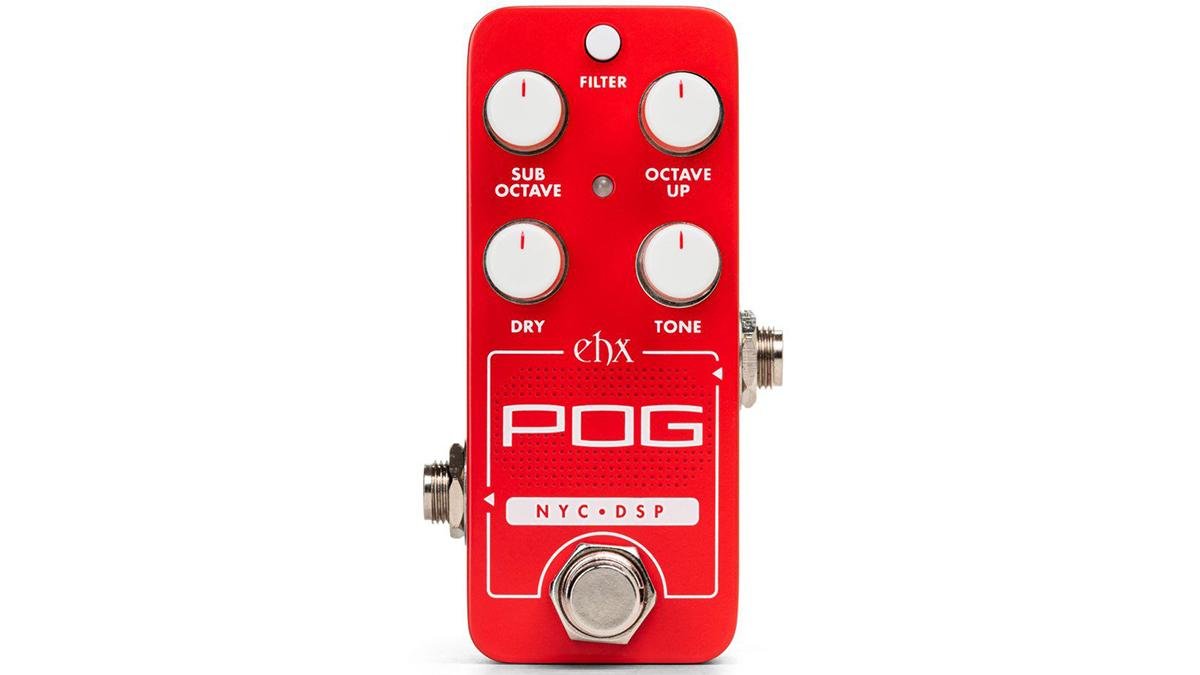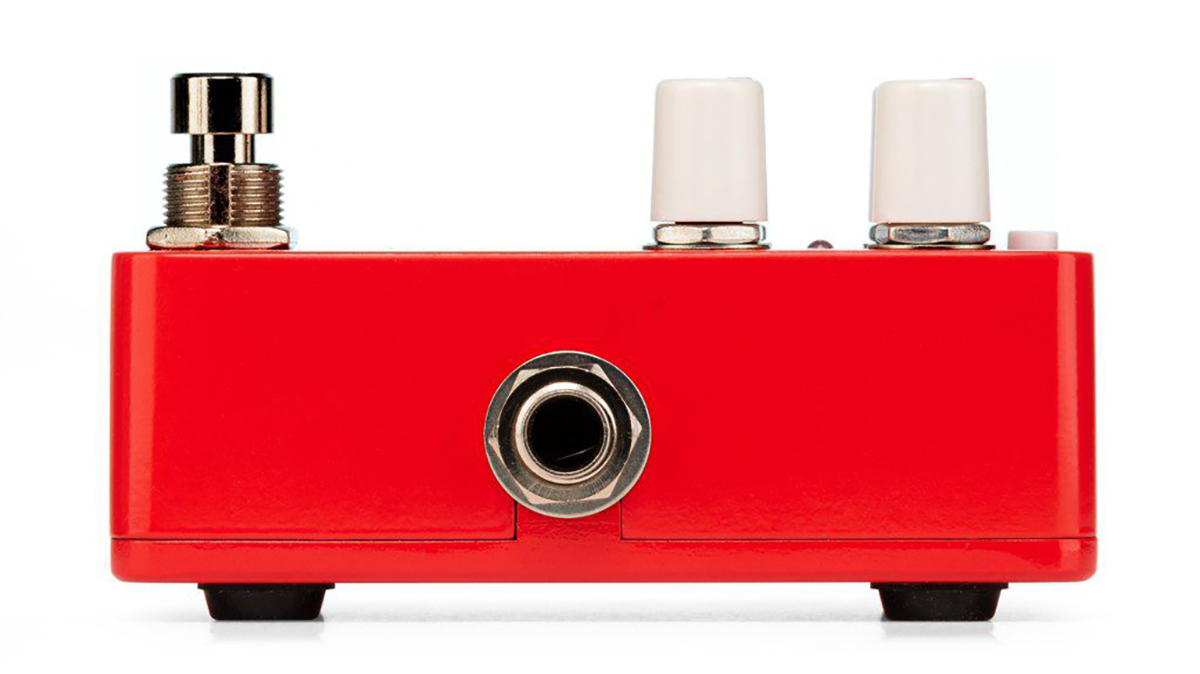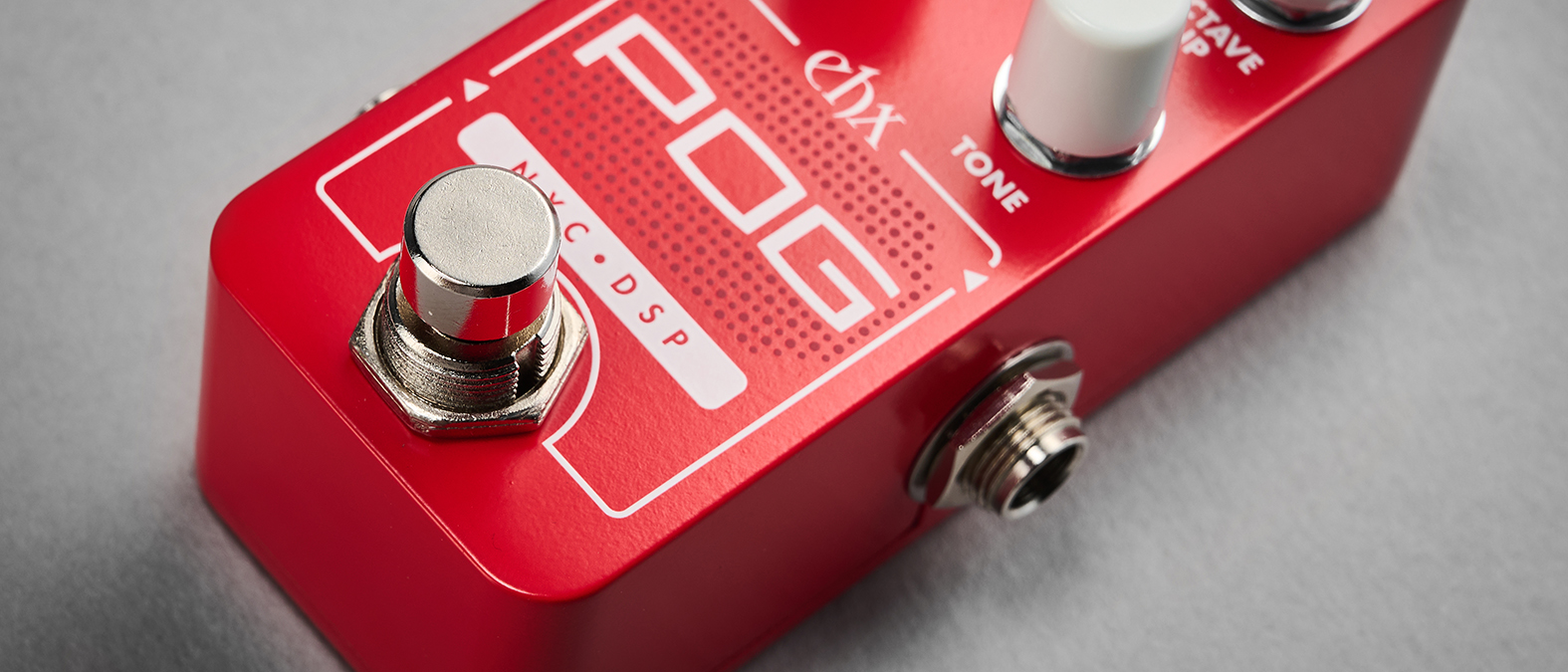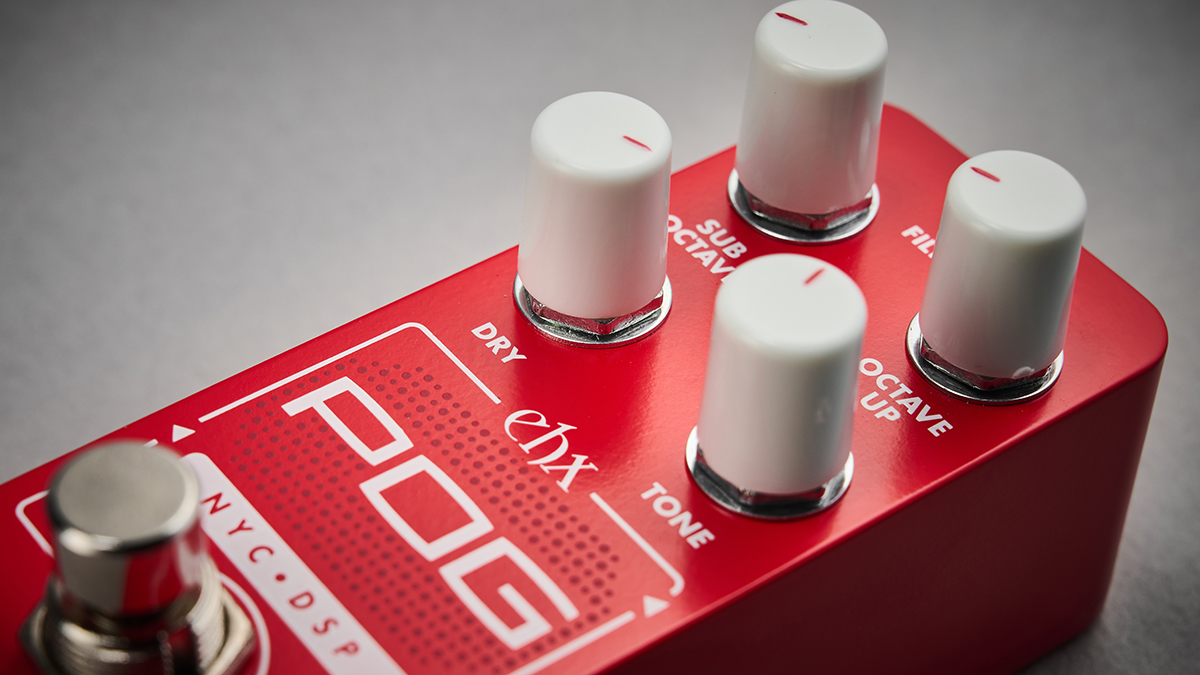MusicRadar Verdict
Electro-Harmonix has a long history of making great pedals, with octave generators and pitch shifters being a particular area of expertise. This latest version of the POG is no exception – packing classic sounds and brand-new features into even less space
Pros
- +
World-class tracking and tones
- +
More features than the Micro and Nano versions
- +
As small as it gets
Cons
- -
No space for a battery
MusicRadar's got your back
Electro-Harmonix Pico Pog: What is it?
It’s hard to keep track of the number of octave pedals that have been released over the years, though it would be fair to say all of them live in the collective shadow of The Big Three – the DigiTech Whammy and all of its variants, the Boss OC series and, of course, the Electro-Harmonix POG line.
Every guitarist will have their own preferences, with Tom Morello and Jonny Greenwood being closely affiliated with the Whammy, Nuno Bettencourt and John Mayer tending to stick with one of the brown Boss pedals and then six-string legends like Josh Homme, Joe Bonamassa and Jack White often leaving Electro-Harmonix in charge of the octave department.
Other players chop and change – lookup Yvette Young, for example, and you’ll find photos of her with all three at various points of her career. All in all, POGs are renowned for great polyphonic tracking, blend controls for both the higher and lower octaves and, perhaps most notably of all, access to more synth-like effects when engaged.
After downsizing the bulky original and POG2 into Micro and Nano versions, Mike Matthews and his team at Electro-Harmonix in New York have now unveiled the smallest POG yet as part of their newly launched Pico series. Sure, it’s petite, but can it actually sound big?
If you’ve managed to catch the official demonstration of the Pico POG by Bill Rupert, you will already have an idea of just how versatile a tool it can be.
In the six minute video, the session legend – who has his name credited on albums by The Beach Boys, Bryan Ferry and Phil Collins to name but a few – explores the range of tones cleverly housed in the unbelievably tiny package, starting with some Royal Blood-style riffing to show how guitarists can singlehandedly fill different frequencies to create a wider sonic picture.
The video ends with a cover of 1976 Jeff Beck track Come Dancing, which famously saw the much-missed English guitar legend squeeze more depth into his leads out of his Mu-Tron Octave Divider.

Electro-Harmonix Pico Pog: Performance and verdict
Our review unit lives up to the promise and then some, creating its own ‘mini band’ of three different musicians by dialling in lots of Sub Octave against lower amounts of Dry and Octave Up.
Swap these controls around so that the Sub Octave sits underneath the higher frequencies and you’ll hear a more synthetic-style effect that almost mimics a 12-string being backed by a bass guitar.
And then there are always options to just use one of the effected signals – turning a guitar into bass or vice versa, as Royal Blood have famously done in recent years, topping the UK album charts with every release to date.
However, this is only scratching the surface of what this credit card-sized stompbox is capable of. Thanks to the brand-new Filter button and Tone knob, it can go further creatively than the POGs of the past.

There’s the default Tilt-EQ mode, where users can use the Tone knob to emphasise less treble and more bass counterclockwise or more treble and less bass the other way – ultimately affecting all three voices at the same time. Press the button again, with the light switching from green to red, and you will engage the Low Pass Filter mode, where the highs in the Sub and Octave Up voices are cut as the Tone control is turned up. And the final orange-lit mode does the opposite, cutting the lows in the two effected signals as the dial is turned.
With the Dry signal minimised, these modes can be very extreme and help unlock more keyboard-like and experimental sounds, as demonstrated by the Eric Johnson-inspired Synth Flute example provided on the company website.
You can even create throbbing effects more associated with dance music and electronica through fast sweeps of the Tone knob – something which POG pedals haven’t done quite like this in the past.

The tracking lives up to the high bar set by its predecessors
Other significant tricks up the sleeve include a cathedral organ effect when combined with generous helpings of reverb and even a jazz organ sound not too similar to Electro-Harmonix’s own B9 Organ Machine when used in tandem with a Leslie/rotary simulator effect.
Every bit as strong and durable as their pedals of the past, it’s hard to see where you can go wrong with the Pico POG.
The tracking lives up to the high bar set by its predecessors, sharing the same DSP processing power, while also inspiring new avenues for experimentation – despite being roughly one-tenth of the size of the original units.
In that regard, it’s easily one of the most impressive pedals of its kind. But there are people out there who will want a more ‘hands-on’ pedal with larger knobs and controls to adjust on the fly, and also players who swear by batteries – in which case this might not be the POG for you. For most of us, however, it’s simply a no-brainer.
MusicRadar verdict: Electro-Harmonix has a long history of making great pedals, with octave generators and pitch shifters being a particular area of expertise. This latest version of the POG is no exception – packing classic sounds and brand-new features into even less space.
Electro-Harmonix Pico Pog: Hands-on videos
EHX
Pedal Empire
Made by Miike
Electro-Harmonix Pico Pog: Specifications

- Controls: Dry, Sub Octave, Octave Up, Tone, Filter
- Circuit: Digital
- Audio: Mono
- Bypass: Buffered
- Power: 9.6VDC-200mA adapter (included)
- Dimensions (in inches): 3.65 x 2.0 x 2.0
- Current Draw: 100mA
- CONTACT: Electro-Harmonix
Amit has been writing for titles like Total Guitar, MusicRadar and Guitar World for over a decade and counts Richie Kotzen, Guthrie Govan and Jeff Beck among his primary influences. He's interviewed everyone from Ozzy Osbourne and Lemmy to Slash and Jimmy Page, and once even traded solos with a member of Slayer on a track released internationally. As a session guitarist, he's played alongside members of Judas Priest and Uriah Heep in London ensemble Metalworks, as well as handling lead guitars for legends like Glen Matlock (Sex Pistols, The Faces) and Stu Hamm (Steve Vai, Joe Satriani, G3).
With its latest free update, Ableton has finally turned Note into the app I always wanted it to be
Technically capable, but struggle to make your tunes sound musical? 5 simple music theory hacks to make your tracks stand out
"Despite its size, it delivers impressive audio quality and premium functions as well as featuring a good selection of inspired sounds": Roland GO:Piano 88PX review











